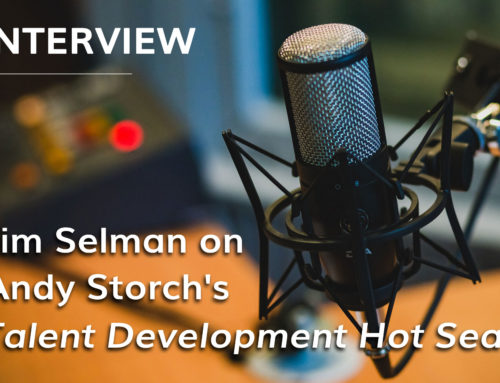Every day you and your leadership team show up to work. And every day you face a seemingly unending series of complex problems. Economic uncertainty, geopolitical unrest, staffing shortages, and stiff competition from nimble startups (to name a few) challenge your mandate to increase quarterly earnings. As a senior executive leader, your job is to solve all these challenging, interrelated problems as they arise.
While this approach sounds sensible, in today’s “real-time world” it doesn’t always work well. Problem-solving puts us as leaders in the position of always reacting to what is happening, always behind the waves of change that are happening faster and faster, always at the mercy of the unpredictable and the unprecedented. Small wonder that recent research demonstrates problem solving often leads to despair, depression and anxiety, especially when you start to believe your problems are out of control, begin to feel helpless, or simply lack confidence.
What if you could build your confidence — even when you have no idea whether a particular solution will work?
We believe you can.
Existential confidence is the ‘killer app’ for any problem-solving dilemma.
In our approach, we combine perspectives from philosophy, neuroscience and psychology to show how you can build “existential confidence” (EC) and not have problem-solving create constant emotional turmoil. Five fundamental constructs underlie how you can work with problems in an EC existence. We outline the first two below and the other three in our next blog.
1. Use being — not thinking or doing — as your first go-to.
The first prerequisite for disentangling the “problem-solving dilemma” is to operate from an existentially confident way of being. Philosopher Martin Heidegger asserts, “Being” is an undivided state in which subject, object, consciousness and the world are one. When you are not separate from the world, then there is no “subject” or “object”. When you are Being this way, you can peacefully design the right actions to take.
Medically speaking, we see our organs as being separate from each other. We see ourselves as being separate from others. This is because our perceptions tell us that there is some physical separateness. But quantum physics teaches us that there is no difference between energy and matter. Recent research and approaches in medicine have determined that it is valid to think of ourselves as systems of energy that are continually in motion, dancing at the atomic and molecular levels within our bodies and with the external world as well. When we operate from “Being”, we operate with this continuity in mind.
2. Develop trust.
When you have EC, you trust that you are sufficient to deal effectively with whatever challenges arise when undertaking an unprecedented and unpredictable journey. Trust is also a way of “Being” and a commitment to a possibility you see.
When you trust, you accept things as they are. In this way, you prepare your brain to make a clear-headed commitment by decreasing amygdala activation and its associated fight, flight or freeze responses. This evokes a positive mood of optimistic resolve and the capacity to commit to a possibility before there is evidence that what you are committing to is possible. This is similar to the growth mindset. In the brain, this means that any errors that cause brain conflict will be a source of learning, rather than a source of anxiety that stops you in your tracks.
All inventions and scientific discoveries use this trust-based approach. First, you make a hypothesis. Believing in it as a possibility activates dopamine systems in the brain. This will motivate you to explore and discover, updating your thinking and plans as you go.
Ordinary trust is based on assessments of future circumstances or another’s sincerity or competence to keep promises and is past based. Self-trust can also be grounded in assessments. However, it is primarily a state of being, and a relationship with an uncertain or unknown future along with an understanding that you have the competencies to deal with or invent what is needed, whatever might emerge. It is trust in yourself even when you can’t ground your assessments.
3. See every problem as part of your path.
Most people think of problems as facts. When you treat problems as facts, you are essentially saying that something happened in the past that must be corrected. Examine that problem/fact and you essentially separate yourself from it. In the same way that you can’t think about your fear of riding a bicycle in order to ride it, you can’t think about a problem as something separate from yourself if you are going to master it.
Change how you relate to the problem and the nature and substance of the problem will change. In many cases, it will disappear as a problem.
A problem is an assessment you make that something is not as it should or could be. Existential confidence acknowledges the assessment, but then accepts what is as it is, without any shoulds or coulds. From there, you can then switch your attention to your commitments and the vision you have of the future, make adjustments and take action.
For example, for most people, getting fired or laid off will be a problem. Some income is necessary to maintain an acceptable quality of life in our contemporary world. If you find yourself in this situation and think your problem is “needing” a job or the money it provides, then the “problem” is outside of you. With an existentially confident approach, you see that your former boss and the company didn’t give you an unsolvable problem. They and the circumstances of your firing/layoff are part of your path. Accept your reality. You — not they — choose your commitments. If you are committed to having more money, you can act accordingly.
4. Avoid cause-and-effect thinking.
Many leaders try to solve problems by looking to remove or change what caused them. But determining what caused something can become a trap.
It is now widely understood that we cannot reliably determine the cause of anything. Causality is often an illusion or, at best, a premature place to stop thinking.
It is premature because, all too often, the solutions we come up with lead to more problems, creating a vicious cycle that is very difficult to escape.
The conventional approach to thinking about problem solving, like ordinary confidence, is based on the past. It puts our brains in reactive mode. It turns our causes and effects into a story about how the world works and does not allow for new insights. Often, it gives us excuses to not proceed further.
Also, you may think that the “cause” of the failure of your project is one person’s foul mood. But what if anxiety made everyone on the team misinterpret what has been going on with that individual and the project? What if their anxiety had them fixated on a recurring issue?
In a rapidly changing real-time world, you want to include all data as “raw material” in your thinking, rather than assigning causality. Switching to a framework that lies outside of cause-and-effect thinking means that data is simply information.
Relating to data as information allows you to make different connections between data points, and that leads to new insights that can inform what commitments you make and what actions you take to realize your vision. This approach is supported by research that shows that insights are more accurate than analytical solutions. In particular, breakthrough insights and actions occur, more often than not, when you are in a state of Being. When leading in this state, you will find yourself putting aside the need to identify and chase after conscious goals in order to realize your vision, and you will discover new openings for invention, experimentation and adventure.
5. Create problems worth solving.
Traditionally, you would react and respond to problems as they arise. Using the EC approach, you invent problems worth solving.
Run-of-the-mill problems may still come your way. But since you now confidently occupy the driver’s seat, you will assess and respond to these problems differently.
Problems worth solving emerge when you commit to a possibility that, by definition, is not yet reality. You literally create challenges for yourself and others that require the cultivation of existential confidence. You welcome doubt and angst, just as you welcome breakdowns and breakthroughs.
You are confident because you are “Being” (that is, you are in Heidegger’s undivided state in which subject, object, consciousness and the world are one confidence and in which you can commit to possibilities that are not yet reality.) Being exists before knowing. Therefore, certainty is never expected. And uncertainty will not thwart your ability to make decisions or move into action.
To find out more about our program in Existential Confidence, e-mail Jim directly at [email protected].


